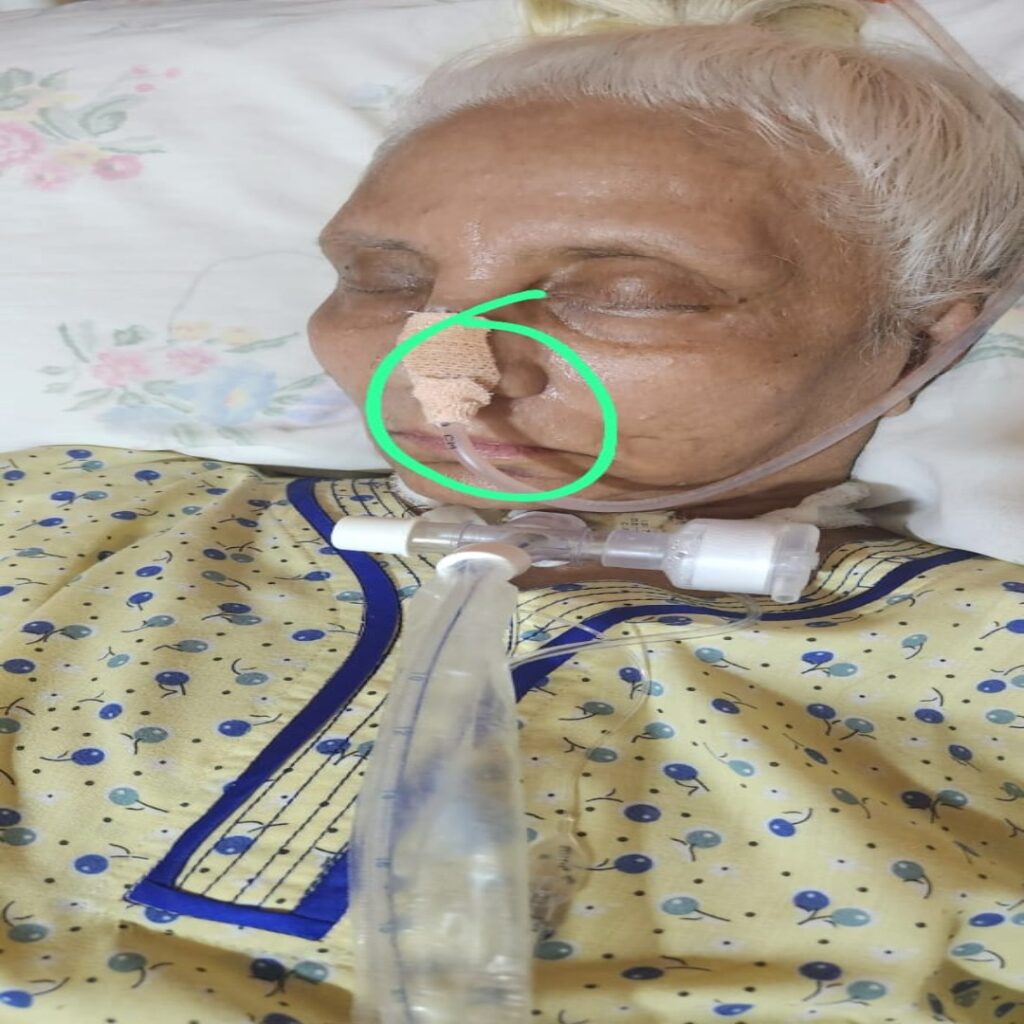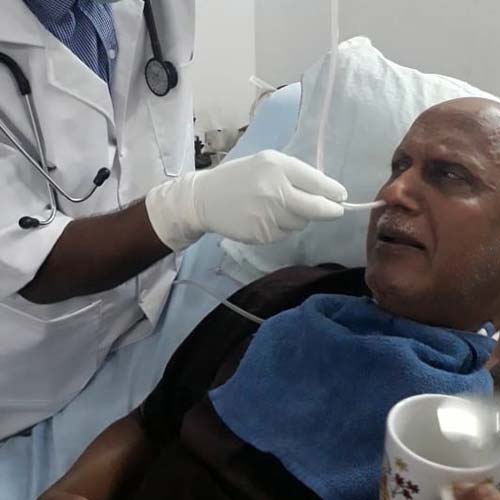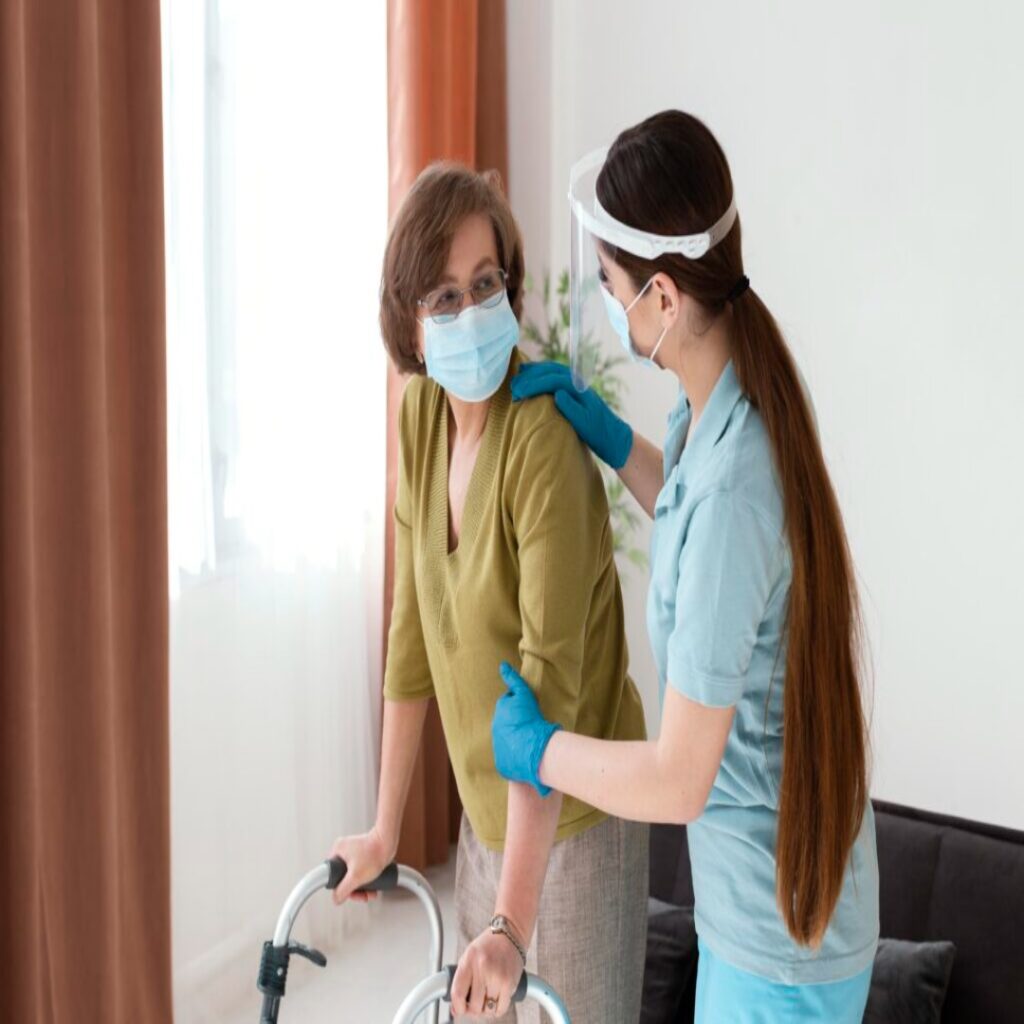For patients who depend on tube feeding for nutrition and hydration, regular feeding tube change is a vital part of safe, effective care. Whether it’s a Ryles tube (nasogastric tube), PEG tube (percutaneous endoscopic gastrostomy), or jejunostomy tube, each requires careful monitoring, timely replacement, and skilled handling.
At ICAMS Healthcare, we bring expert medical care right to your home — providing safe and professional feeding tube change services in Bangalore, performed by trained nurses under doctor supervision. Our mission is to ensure your loved one’s comfort, safety, and dignity with every visit.
What Is a Feeding Tube?
A feeding tube is a medical device used to deliver nutrition, fluids, or medication directly into the stomach or small intestine for patients who cannot eat or swallow safely.
According to Wikipedia, feeding tubes are critical in clinical care for individuals recovering from surgery, living with neurological conditions, or managing long-term illnesses that affect swallowing or digestion.
The main types of feeding tubes include:
- Nasogastric (Ryles) Tube: Inserted through the nose into the stomach for short-term feeding.
- Orogastric Tube: Inserted through the mouth, typically for newborns or ICU patients.
- Gastrostomy (PEG) Tube: Surgically placed through the abdominal wall for long-term feeding.
- Jejunostomy Tube: Placed into the small intestine for patients with specific digestive issues.
Each type serves a unique medical purpose, but all require professional insertion, maintenance, and regular replacement to ensure safety.
Why Does a Feeding Tube Need to Be Changed?
Feeding tubes cannot remain indefinitely in place. Over time, the material may degrade, become blocked, or cause irritation. Routine feeding tube change helps maintain proper function and prevent complications such as:
- Blockage or clogging from formula or medication residue
- Infection at the insertion site
- Tube displacement or accidental removal
- Leakage around the stoma (for PEG/J-tubes)
- Tube wear and tear from prolonged use
The frequency of replacement depends on the tube type:
| Tube Type | Recommended Change Frequency |
|---|---|
| Ryles / NG Tube | Every 4–6 weeks |
| PEG Tube | Every 6–12 months |
| Jejunostomy Tube | Every 3–6 months |
Your doctor or home nurse will assess and recommend the correct schedule for replacement based on the patient’s health and tube condition.
Feeding Tube Change Procedure at Home
Changing a feeding tube is a clinical procedure that must be performed by a trained nurse or doctor using sterile techniques. Here’s how ICAMS Healthcare ensures safety and precision during every home visit:
1. Pre-Assessment
The nurse checks the patient’s medical condition, feeding tolerance, and current tube status — including signs of infection or irritation.
2. Preparation
All necessary sterile materials are set up: gloves, new tube, lubricant, syringe, pH strips, and cleaning equipment. The patient is positioned comfortably.
3. Removal of Old Tube
The existing tube is gently removed while monitoring the patient’s comfort and oxygenation. For PEG/J-tubes, the stoma site is inspected and cleaned.
4. Insertion of New Tube
The new feeding tube is lubricated and inserted via the correct route (nasal, gastric, or stoma). The nurse ensures smooth insertion and patient comfort.
5. Verification of Placement
Correct placement is crucial. The nurse confirms it by checking gastric aspirate pH, listening for air insufflation, or following medical verification protocols.
6. Securing the Tube
The new tube is secured with hypoallergenic medical tape or fixation device to prevent accidental displacement.
7. Post-Procedure Care
The nurse provides instructions to caregivers on flushing, feeding schedules, cleaning, and warning signs to watch for.
This hospital-grade process, done in the comfort of your home, ensures hygiene, safety, and peace of mind for both patients and families.
Advantages of Feeding Tube Change at Home
Home-based feeding tube change offers multiple benefits — especially for elderly or bedridden patients:
- Comfort: The patient remains in a familiar environment.
- Reduced infection risk: Avoids hospital exposure to other illnesses.
- Convenience: Saves travel time and effort for caregivers.
- Cost-effective: Lower than hospital procedure charges.
- Personalized attention: One-on-one nursing care and aftercare support.
- 24/7 availability: ICAMS Healthcare provides round-the-clock home nursing in Bangalore.
Who Needs a Feeding Tube?
Feeding tubes are used for patients who cannot safely eat or swallow. Common conditions include:
- Stroke and neurological disorders
- Head or neck cancer
- Post-operative recovery
- Severe burns or trauma
- Chronic dysphagia (swallowing difficulty)
- Unconscious or ventilated patients
- Pediatric feeding challenges
For detailed educational material about tube feeding, Children’s Minnesota’s NG Tube Feeding Guide is an excellent reference for parents and caregivers.
Why Choose ICAMS Healthcare for Feeding Tube Change in Bangalore
ICAMS Healthcare specializes in comprehensive home healthcare services — bringing professional nursing, diagnostics, and doctor visits right to your doorstep.
Here’s why families across Bangalore trust us for feeding tube care:
- Certified nurses & doctors with clinical experience
- Sterile equipment & protocols for infection control
- Round-the-clock service (24/7 availability)
- Holistic support: Nursing, diagnostics, physiotherapy, and teleconsultation under one roof
- Personalized care plans based on medical condition and feeding type
- Trusted reputation with 95% on-time medical assistance and 96% compassionate care rating
We don’t just perform a procedure — we deliver comfort, compassion, and continuity of care.
How to Book a Feeding Tube Change Service at Home
Booking a professional feeding tube change at home with ICAMS Healthcare is simple:
- Visit www.icamshealthcare.in
- Go to the Contact Us page
- Call or WhatsApp +91 9945 428 800 (24/7 helpline)
- Share patient details and preferred time slot
- Our nurse visits your home with sterile equipment and performs the procedure safely
We also provide follow-up care for regular feeding tube changes, monitoring, and caregiver training.
Feeding Tube Care & Maintenance Tips
Proper care after a feeding tube change helps extend its lifespan and prevents complications:
- Flush the tube with clean water before and after each feed
- Keep the stoma area (for PEG/J-tubes) clean and dry
- Use prescribed feed formulas and medications only
- Check for signs of redness, swelling, or leakage
- Never attempt reinsertion without medical supervision
- Maintain strict hand hygiene during handling
If you notice pain, tube blockage, or displacement — contact ICAMS Healthcare immediately for professional assistance.
Our Commitment to Compassionate Home Care
At ICAMS Healthcare, we believe healing happens best at home. Our nursing professionals are trained to perform delicate medical procedures like feeding tube insertion and change with utmost care and precision.
Whether for a short-term nasogastric tube or a long-term PEG feeding setup, we ensure every patient receives respectful, safe, and personalized care.
Because your comfort, safety, and dignity are at the heart of everything we do.
Frequently Asked Questions (FAQ)
1. How often should a feeding tube be changed?
It depends on the type: Ryles/NG tubes every 4–6 weeks, PEG tubes every 6–12 months, and jejunostomy tubes every 3–6 months.
2. Can feeding tubes be changed at home?
Yes, trained nurses from ICAMS Healthcare can safely perform feeding tube changes at home under doctor supervision.
3. What are the signs that a feeding tube needs replacement?
Blockage, leakage, tube hardening, infection, or discomfort indicate the need for a replacement.
4. Is feeding tube change painful?
It may cause mild discomfort but is not usually painful. Our nurses ensure smooth, gentle insertion.
5. Can caregivers manage feeding tube care?
Yes — caregivers can handle flushing, cleaning, and basic maintenance, but the actual change must be done by professionals.
6. What happens if the feeding tube falls out?
Do not reinsert it yourself. Contact ICAMS Healthcare immediately for safe replacement.
7. What type of food can be given through the tube?
Doctor-prescribed liquid feeds or commercial nutrition formulas; avoid thick or unapproved blends.
8. Are feeding tubes safe for long-term use?
Yes — when properly maintained and replaced on schedule, they are safe for both adults and children.
9. What are the risks of delaying feeding tube change?
Delays can cause infection, leakage, or feeding complications. Timely replacement prevents these risks.
10. How do I book a feeding tube change with ICAMS Healthcare?
You can book through our website or the Contact Us page — or call +91 9945 428 800 anytime.
Conclusion
Feeding tube change is more than a routine procedure — it’s an essential part of safe nutritional care. With ICAMS Healthcare, you can have this critical service performed at home by certified professionals who bring hospital-level expertise to your doorstep.
If your loved one requires feeding tube change in Bangalore, contact us today — because ICAMS Healthcare delivers trusted medical care, wherever you are.



